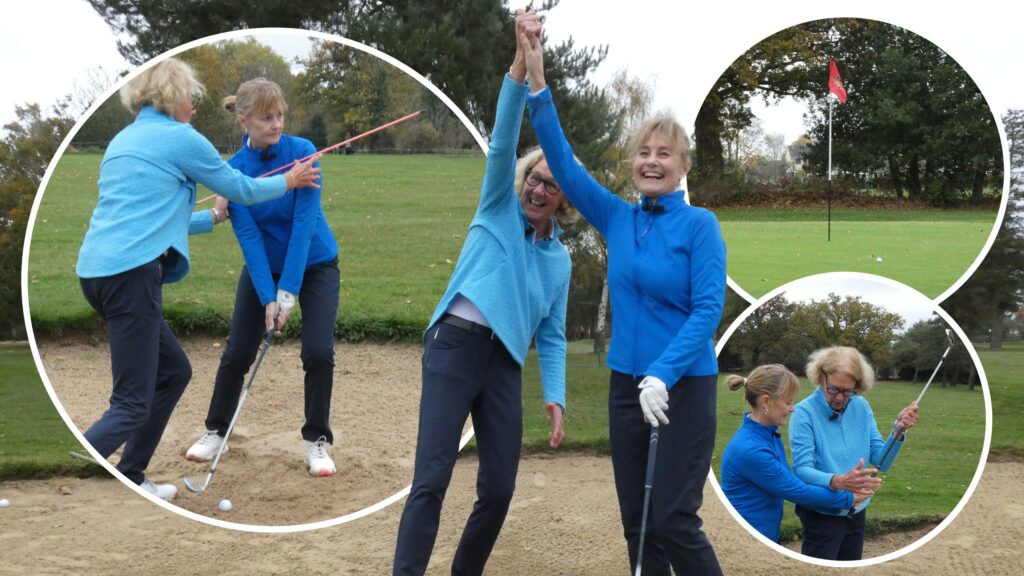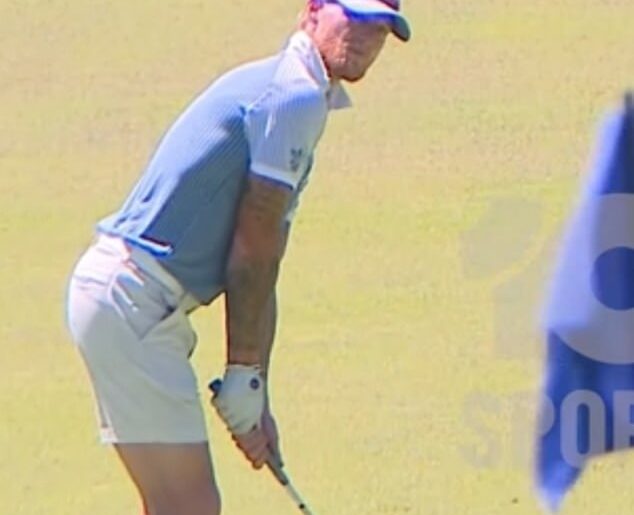It’s fair to say that many golfers, and women in particular, develop a real fear when their ball lands in a bunker, and this season, I’ve been one of them. I’ve lost so many shots, either struggling to get out of the sand or airmailing the ball across the green.
Over the years, I’ve directed countless women’s instruction shoots, so I’m armed with all the knowledge of how to play bunker shots. That’s what I’ve found most frustrating, especially when people say, ‘You used to be really good out of bunkers!’
You may like
Set-Up
It was a case of back to basics for my set-up. I’m a right-handed player and my right hand had slipped too far round under the grip.
Without adding any extra pressure, and keeping my right elbow soft, Sarah got me to move the fleshy pad under my right thumb (the non-target hand) on top of my left thumb, as though I was gently squeezing five pence between the two. This is to help gain maximum loft without opening the clubface.
My eyes lit up, as I did wonder if this tweak to my grip would also help to abolish short game shanks, but that’s another lesson!
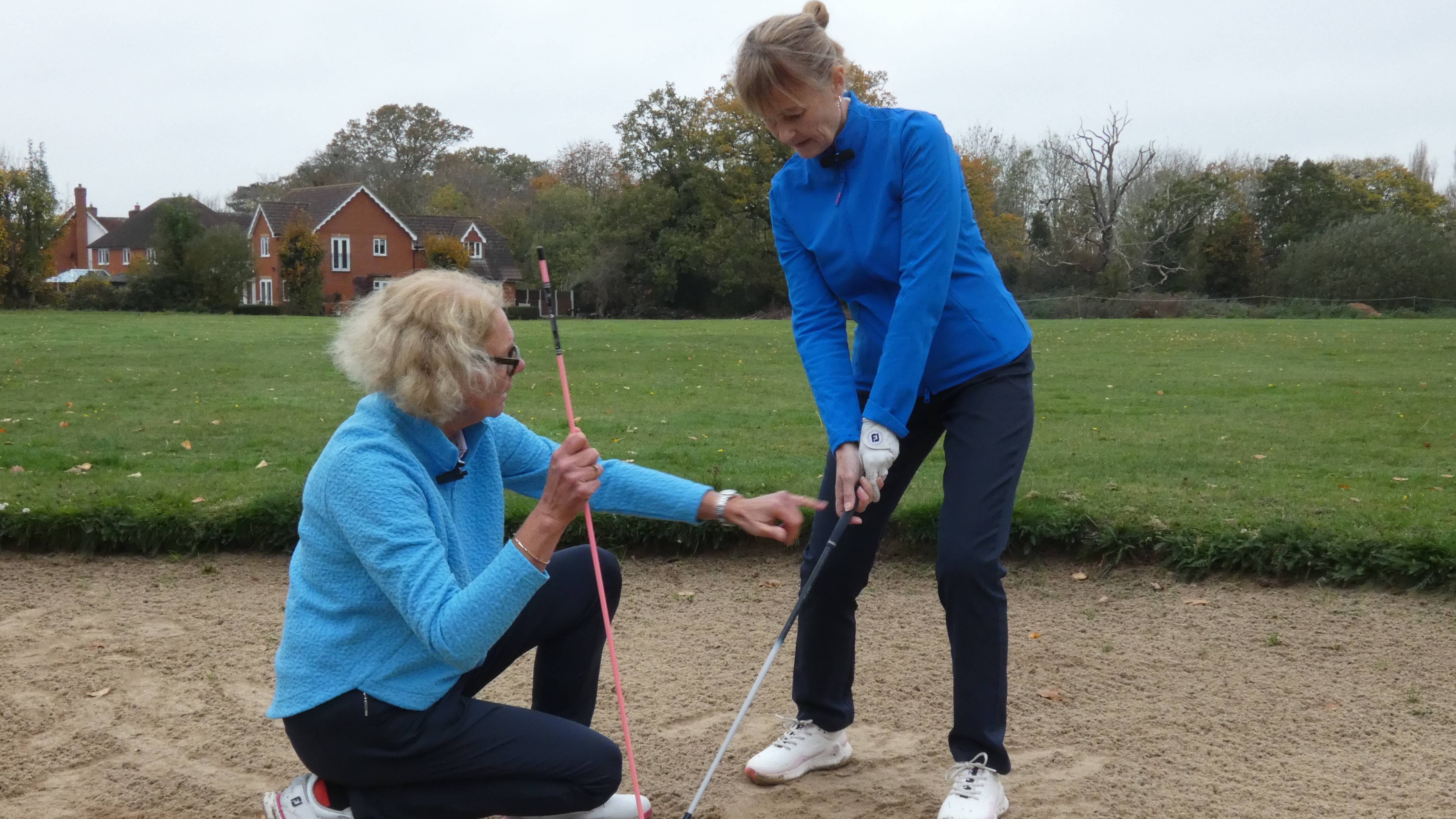
Alison’s right hand needed to move slightly to sit on top of her left thumb
(Image credit: Paul Bennett)
Too Much Spine Angle
I must remember to wriggle in the sand and lower my centre of gravity. But from there, one of my biggest problems, and one of the reasons why I often hit behind the ball, is because I have too much spine angle, tilting backwards, instead of keeping my shoulders level and my sternum over the ball, not behind it.
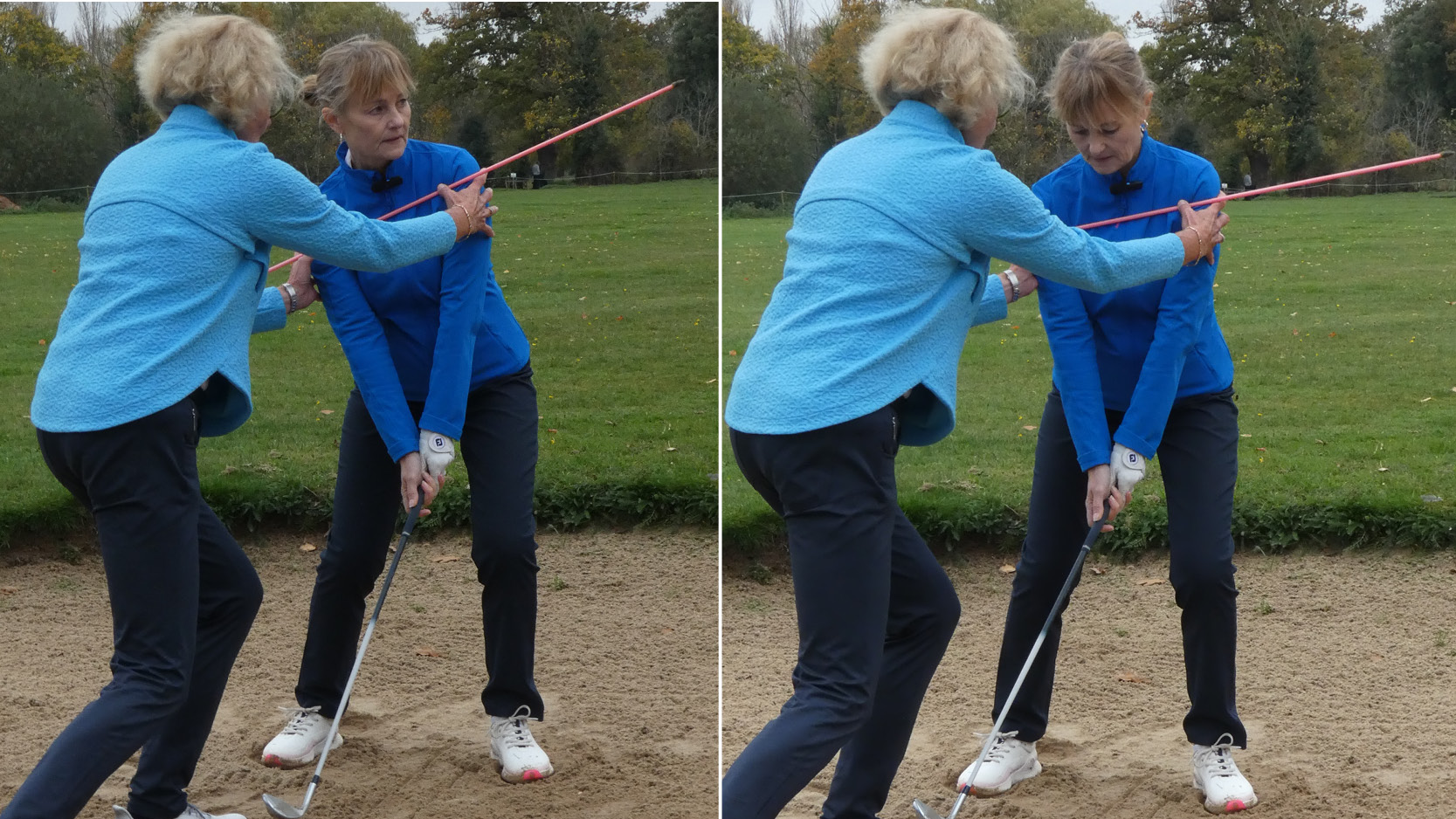
Left-hand pic shows too much spine and angle, and how it should be
(Image credit: Paul Bennett)
80% Of Weight On Front Leg
In turn, too much spine angle contributes to another fault, which is too much weight on the right side. I had to really focus on feeling like I had no weight shift towards the non-target side.
I was told to keep stable, really lean into my left side and feel my quads working. For me, having been so far back, I now felt so far forward, but as Sarah pointed out, remember that in golf ‘feel’ and ‘real’ are totally different. From the correct set-up, I was able to create a nice delivery position and now produce bunker shots with trajectory.

Focus on keeping 80% of your weight on your front foot
(Image credit: Paul Bennett)
Take Sand
Taking sand is one thing, but more importantly, it’s about taking sand in the right place behind the ball. Sarah made two lines in the sand 4 inches apart and the aim was to enter the sand between the two lines.
To be honest, once I’d corrected my other faults, I found it easier to attack the sand in the right place with a more forward flowing movement.
I must admit, since putting into practice what I’ve learnt, I still have to concentrate hard on imagining another ball behind my ball, so I make contact with the sand in the right place.
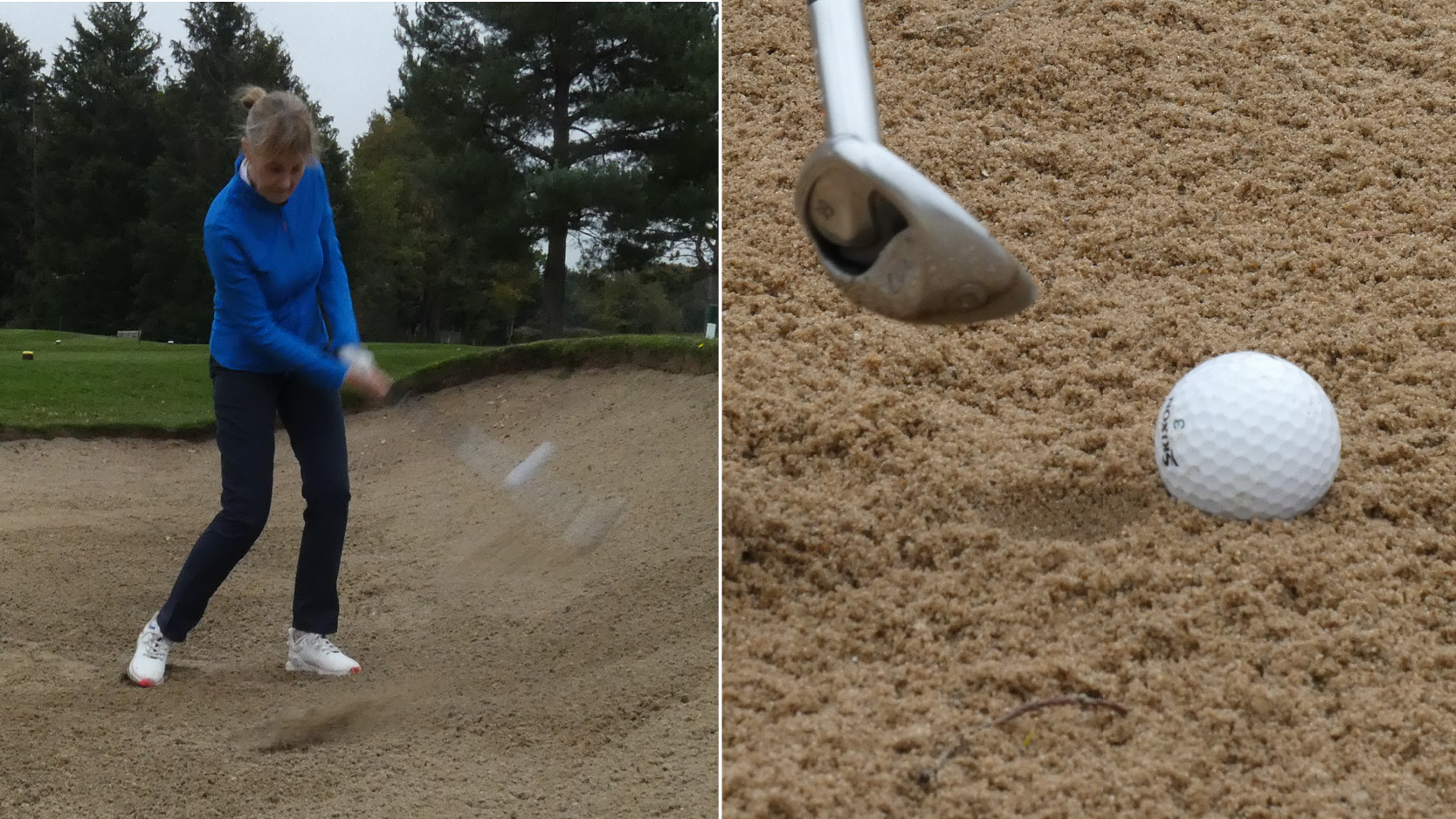
An indent was made behind the ball, the place where Alison should make contact with the sand
(Image credit: Paul Bennett)
I cannot emphasise enough the importance of my bunker lesson, or in fact, any lesson. I’d left it too long, and too many faults had crept in – it’s incredible that I ever managed to get out of a bunker!
Now with Sarah’s expert tuition, which she delivered in such a relatable way, I have all the tools I need to improve in the sand. She has given me the confidence to trust myself in the bunker, and so far, so good!
If you’re struggling in the sand, here are Sarah’s top tips:
Five S’s For Success In The SandSet-up – Widen the base and “wriggle” into the sand nice and low leaning into the inside of your target thigh. This is important to contact the sand propelling the ball from the the ideal forward of central position.Swing Length – All good bunker players have excellent tempos and appropriate length of swing for the shot in hand. A common error is a very short quick backswing compromising the rhythm.Speed – I find many golfers “decelerate” both with their body and the club. Sand is a heavy material so requires a certain degree of power for the club to glide through.Sound – A well- executed bunker shot will produce a crisp sound with a shallow even entry divot. We all know too well when we take too much sand the divot is deep with a resounding thud or not enough a thin tingle sound.Sand – The entry point for all bunker shots is within an approximate 4”-5” parameter so practice hitting in between two lines this distance apart. This drill provides immediate feedback aiding consistency of strike.
The last piece of advice, and probably the most important, is to manage your expectations. Enter the bunker with a sensible exit route based on the lie and height of the bunker face. Walk into the bunker with confidence and a smile.
Sarah Bennett
PGA Honorary Member
PGA Captain GB&I 2022
Instagram and Facebook

